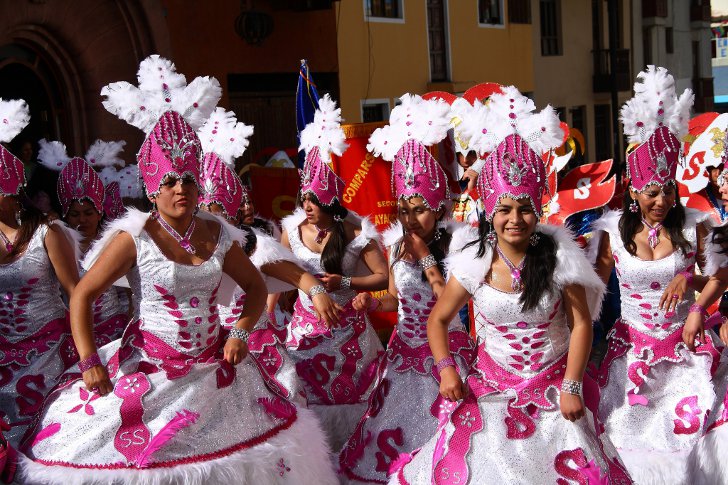Cajamarca is the capital and the largest city of the Cajamarca Region in northern Peru. The city has many tourists attractions, including beautiful mountain landscapes, thermal springs in the nearby resort of Los Baños del Inca, pre-Hispanic archaeological sites, churches in Spanish colonial style, and the annual Carnival of Cajamarca.
Carnival celebrations were brought to South America by Spanish conquistadors centuries ago, but the Cajamarca Carnival in its present-day form started in 1930. The celebration has grown so much since its inception that Cajamarca is often referred to as the Capital of Peruvian Carnival. Every year, about 100,000 people from all over the country come to the city for the festivities.
The Carnival season in Cajamarca starts 40 days before Ash Wednesday (the first day of Lent), typically in late January or early February, but the main festivities begin on the Friday before Ash Wednesday. The first event of the Cajamarca Carnival is the selection of the Carnival Queen. Each district of the city presents a candidate, who must be aged between 18 and 22. All candidates participate in a pageant, at the end of which a panel of judges declares the winner. The Carnival Queen participates in all major events of the Carnival, wearing her crown and sash.
The Carnival begins in earnest on Saturday with the arrival of the Carnival King, called Ño Carnavalón or Rey Momo (King Momo). The King is a symbol of unruliness and fun; he enters the city in the form of a giant papier-mâché figure and presides over the Carnival parades during the next few days. Saturday is also the day of mock battles, where people throw flour at each other and spray each other with paint and water.
Sunday is the day of a parade called the Concurso de Patrullas y Comparsas. It is a competition between groups of musicians and dancers in vibrant costumes; prizes are awarded to winners in a variety of categories. The main parade of the Cajamarca Carnival, the Gran Corso de Carnaval, takes place on Carnival Monday. It features elaborate floats with musicians, dancers and other performers in colorful costumes and masks.
The Grand Parade is followed by a local tradition called cortamonte or unsha (yunsha). The unsha is a tree adorned with ribbons, small toys, balloons, fruits, treats, bottles of liquor, and other decorations and gifts. Participants take turns dancing around the tree, which is eventually chopped down with a machete, and the gifts are up for grabs.
On Shrove Tuasday, Ño Carnavalón dies, and people mourn him by dressing in black, weeping at his coffin, and holding a wake with traditional dishes of Peruvian cuisine, liquor, and cigars. The symbolic burial of the Carnival King is held in Los Baños del Inca on Ash Wednesday. It includes the reading of the King’s will filled with satirical comments about the local authorities.

Photo: Jorge Custodio B.




